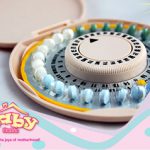These are devices that are inserted into the body and left in place for a few years.
Implantable Rod
This is a matchstick-size, flexible rod that is put under the skin of the upper arm. Popular brands in Kenya are Implanon and Jadelle. The rod releases a synthetic hormone progestin, which causes changes in the lining of the uterus and the cervical mucus to keep the sperm from joining an egg. Less often, it stops the ovaries from releasing eggs. It is effective for three or five years depending on the brand.
Common side effects include Acne, weight gain, ovarian cysts, mood changes, depression, weight gain or loss, sore breasts, lower sex libido and menstrual cycle disturbances, including irregular spotting or bleeding and amenorrhea.
Intrauterine Devices or IUDs
An IUD is a small device shaped like a “T” that goes in your uterus. There are two types:
Copper IUD• — The copper IUD releases a small amount of copper into the uterus, which prevents the sperm from reaching and fertilizing the egg. If fertilization does occur, the IUD keeps the fertilized egg from implanting in the lining of the uterus. A doctor needs to put in your copper IUD. It can stay in your uterus for 5 to 10 years.
Hormonal IUD• — The hormonal IUD is sometimes called an intrauterine system, or IUS. It releases progestin into the uterus, which keeps the ovaries from releasing an egg and causes the cervical mucus to thicken so sperm can’t reach the egg. It also affects the ability of a fertilized egg to successfully implant in the uterus. A doctor needs to put in a hormonal IUD. It can stay in your uterus for up to 5 years.
Common side effects include: Cramps, bleeding between periods, pelvic inflammatory disease, a tear or hole in the uterus.














